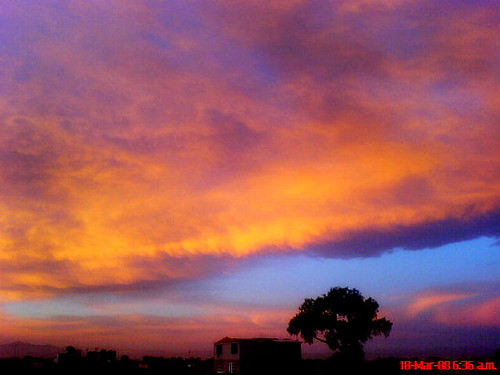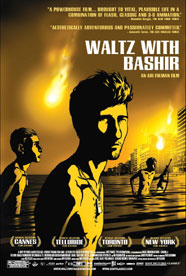|
|
Saturday, December 6th, 2008
Oh and as long as we're talking about gift ideas: as Scott notes today, you could go to Dalkey Archive Press and (if you act quickly) order 5 titles from their Spanish Literature Series for only $35 or 10 titles from their Latin American Literature Series for only $60!
posted morning of December 6th, 2008: Respond
➳ More posts about Readings
|  |
|
Hey, anybody wondering what present to buy for their friend Jeremy this holiday season? Look no further: I would love to receive practically any of the box sets offered by JSP Records, but especially Mountain Blues or Rare Bluegrass.
posted morning of December 6th, 2008: Respond
➳ More posts about Music
|  |
Friday, December 5th, 2008
This passage, at the beginning of the fifth chapter, is really striking: They have spoken about stones and starlings, now they are speaking about decisions taken. They are in the yard behind the house, José Anaiço is seated on the doorstep, Joachim Sassa in a chair since he is a visitor, and because José Anaiço is sitting with his back to the kitchen where the light is coming from, we still do not know what he looks like, this man appears to be hiding himself, but this is not the case, how often have we shown ourselves as we really are, and yet we need not have bothered, there was no one there to notice.
I can picture exactly how this would look in a movie. Sort of deep reds and shadow, with a light yellow incandescence coming from the kitchen door and window (I sort of think the door is ajar), when the camera (which starts with the two of them in profile, with shadows across them and the starry night behind) pans past Sassa at one point the window will be a frame of light around his head. (For some reason I am thinking of this as set at the back yard of the house of one of the Great Whatsiteers, who posted pictures of her back yard a few months ago -- if I can remember where that post is, I'll add the image to this post.*) This passage shows almost perfectly the ideal form of how Saramago structures his thoughts. The first sentence (the first sentence of the chapter) draws in the whole story so far, has an elegant, quick rhythm. Then period -- a moment to collect your thoughts. And charge into the second sentence, the long glissando with ups and downs, repetitions, speeding up and slowing down, and delivering you to another quick chord.
 *(Aha! Found it.)

posted evening of December 5th, 2008: Respond
➳ More posts about The Stone Raft
|  |
Thursday, December 4th, 2008
People cannot hide their secrets even though they may say they wish to keep them, a sudden shriek betrays them, the sudden softening of a vowel exposes them, any observer with experience of the human voice and human nature would have perceived at once that the girl at the inn is in love.
It seems to me like Saramago walks a very fine line in his fiction. It is the stories of his characters that carry the books, that make you interested in the outlandish plots he is weaving. And I don't mean to say that the plots are dull -- they aren't, they are wild to imagine and the complications he touches on bear a lot of thinking about -- but it is the characters that engage me as a reader, that make the books real. That was the real failing of Death with Interruptions, the reason it seemed so mechanical and flat was the lack of any fully realized characters in the first half of the book. I am glad to see The Stone Raft does not suffer from any such failing. The primary characters -- who we have known by name since the first chapter and are really starting to come to the fore in the fourth chapter -- are fully human almost from the first mention; and even many minor characters mentioned only in passing are rendered well enough to give a sense of their humanity.
posted evening of December 4th, 2008: Respond
➳ More posts about José Saramago
|  |
|
In comments at the Apostropher's blog, Gaijin Biker mentions how cool Idée Inc.'s new image-searching technology is. And it is indeed very cool: try out a couple of the applications they are demoing on their labs page. try out a couple of the applications they are demoing on their labs page.
- Multicolr Search lets you scan their database of images (10 million pictures selected from Flickr) for pictures with particular combinations of colors.
 I don't see any application for this in my own life (then again I'm not a designer) but it does seem very cool and fun to play with. I don't see any application for this in my own life (then again I'm not a designer) but it does seem very cool and fun to play with.
-
BYO Image lets you specify an image file and have Idée search its database for images that are similar. This seems just great, and maybe more complicated than the Multicolr application.
posted afternoon of December 4th, 2008: Respond
➳ More posts about Pretty Pictures
|  |
Wednesday, December third, 2008
I'm curious to know if there is a term that will express the level of familiarity with a language that allows you to read it with a dictionary at hand. This is how well I know Spanish and French; I almost know Portuguese this well. German I know better, well enough that I can compose in German with a dictionary at hand; but I do still need a dictionary if I'm reading anything particularly complicated in German. So it's a broad spectrum; but I'm interested because my understanding of "knowing a language" is "being fluent" -- being able to understand and compose in that language the same way one understands and composes in one's own language. By this standard I only know English. But I (something) German, and Spanish, and French, and Portuguese; what's the verb that fits there? I was reading a translator's musings recently (I think it was Daniel Hahn, but I'm not sure about that), who said that translating was the most intense form of reading. I think there's something to this; and specifically, I think it is probably possible to get more out of translating something from a language that I don't "know", than out of reading the translated work; if I am prepared to put in the time, which I think I would just about never be prepared to do for a long work. The translations I've been doing of Saramago's Notebook entries take a long time in comparison to the quantity/quality of product. But the process gives me a feeling of intense familiarity with the words I'm translating.
posted evening of December third, 2008: 1 response
➳ More posts about Translation
|  |
|
Saramago writes a quick note to say that a new book has started walking around in his head. ¡Uff!
posted evening of December third, 2008: Respond
➳ More posts about Saramago's Notebook
|  |
|
 This movie will be opening in the city at the end of this month. It looks like a really disturbing and meaningful look at conflict in the Middle East (or one subset of such conflict) -- it is a documentary/animated recreation of the massacre at Sabra and Shatila, directed by a man who participated in that massacre as a 19-year-old Israeli Defense Forces soldier. Sebastian, who saw it in Germany, describes it as "devastating." This movie will be opening in the city at the end of this month. It looks like a really disturbing and meaningful look at conflict in the Middle East (or one subset of such conflict) -- it is a documentary/animated recreation of the massacre at Sabra and Shatila, directed by a man who participated in that massacre as a 19-year-old Israeli Defense Forces soldier. Sebastian, who saw it in Germany, describes it as "devastating."
Jonathan Freedman reviews the film for the Guardian; he calls it "startlingly original" and says, "The effect should be flat, but the low-tech style somehow conveys an emotional depth that catches you by surprise. The characters appear in two dimensions, yet are intensely human." Folman explains to Freedman why he chose animation to create his documentary: "There was no other way to do it, to show memories, hallucinations, dreams. War is like a really bad acid trip, and this was the only way to show that."
posted morning of December third, 2008: Respond
➳ More posts about Waltz with Bashir
|  |
Tuesday, December second, 2008
 Thanks to graffiti artist GRL, I just found out about this color. Hee! (As long as we're thinking about dirty shades of green, check out the new game: if you like Tetris and Bloxxorz, you'll love Assembler. The site will sometimes crash your browser, though.)  (Source code for this kind of a look is, e.g., <div style="background-color:#bada55;">...</div>)
posted morning of December second, 2008: Respond
|  |
Monday, December first, 2008
 From Dark Roasted Blend, a page of truly spectacular microscope photography. There are even images with visibly granular atoms, which I did not know was possible.* The pictures are selected from among the winners and honorable mentions of this year's BioScapes Digital Imaging Competition, and other sources. (via Apostropher.) From Dark Roasted Blend, a page of truly spectacular microscope photography. There are even images with visibly granular atoms, which I did not know was possible.* The pictures are selected from among the winners and honorable mentions of this year's BioScapes Digital Imaging Competition, and other sources. (via Apostropher.)
 * Yep: you need a scanning tunneling microscope to do it. Atoms have been being photographed since before I was born.
posted evening of December first, 2008: Respond
| Previous posts
Archives  | |
|
Drop me a line! or, sign my Guestbook.
•
Check out Ellen's writing at Patch.com.
| |


















 Bill Ayers
Bill Ayers  Cyrus
Cyrus 